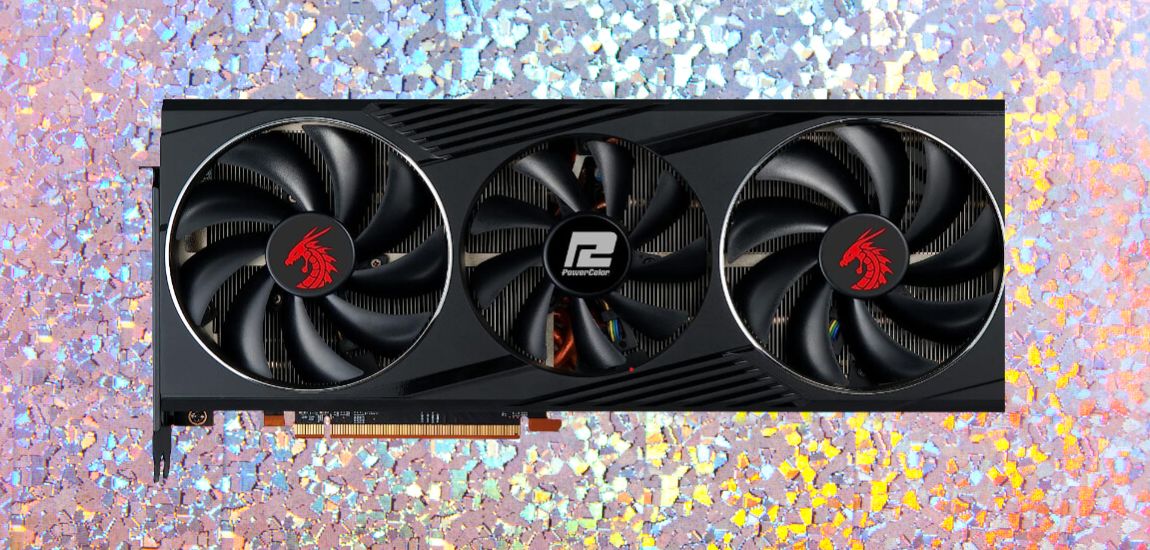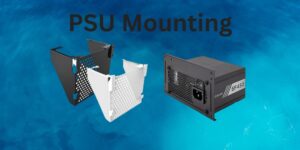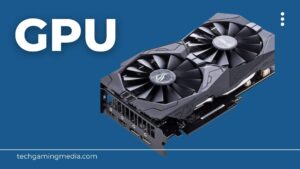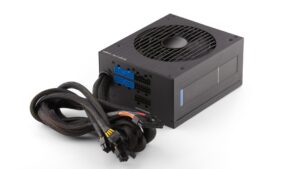Are PowerColor GPUs a Solid Choice for Gamers?
Are you considering purchasing a PowerColor GPU but unsure if it’s a good investment? In this comprehensive blog post, we will delve into the world of PowerColor GPUs and provide you with an unbiased review and comparison. We’ll analyze their performance, features, reliability, and customer feedback to help you make an informed decision. So, let’s dive in and find out if PowerColor GPUs are worth considering for your gaming or professional needs.
PowerColor GPUs: An Overview
PowerColor is a leading manufacturer of AMD graphics cards. As an AMD-exclusive partner, they produce a variety of Radeon GPUs across product lines for gaming, workstations and crypto-mining. Their cards offer custom cooling solutions with dual, triple-fan designs and factory overclocked speeds. Red Devil and Red Dragon series cards target hardcore gamers, while Hellhound and Inferno models aim for crypto miners. PowerColor also offers liquid and air-cooled versions of professional workstation cards using AMD Radeon Pro GPUs.
1. Performance and Features:
When it comes to performance, GPUs are designed to deliver excellent gaming experiences and handle demanding tasks. They leverage advanced technologies, such as AMD’s Radeon architecture, to provide high-quality graphics rendering and smooth gameplay. PowerColor GPUs often offer competitive performance in their respective price ranges.
PowerColor GPUs also come equipped with a range of features to enhance the user experience. These may include efficient cooling systems, customizable RGB lighting, multiple connectivity options, and software utilities for fine-tuning performance settings. These features contribute to an immersive gaming experience and provide flexibility for customization.
2. Reliability and Build Quality:
Reliability is an essential factor to consider when investing in a graphics card. PowerColor GPUs are generally known for their reliability and build quality. They undergo rigorous testing procedures during manufacturing to ensure stability and durability. While individual experiences may vary, PowerColor strives to provide GPUs that can withstand long gaming sessions and heavy workloads.
3. Customer Feedback and Reviews
To gain better insights into PowerColor GPUs’ real-world performance, let’s explore customer feedback and reviews. While opinions may vary, these GPUs tend to receive positive reviews for their performance, value for money, and customer support. Users appreciate their ability to handle demanding games and applications without overheating or significant performance drops.
Comparison with Competitors
To give you a comprehensive understanding of PowerColor GPUs’ position in the market, let’s compare them with three popular competitors:
1. PowerColor vs. NVIDIA
The PoweColor GPUs stack up well against NVIDIA’s offerings. PowerColor is an AMD partner focusing exclusively on Radeon graphics products, offering custom designs and factory-overclocked variants. NVIDIA is the dominant GPU manufacturer, developing its own GeForce gaming solutions and professional Quadro cards. While PowerColor produces AMD alternatives, NVIDIA leads in terms of market share, driver support, and high-end graphics card performance.
2. PowerColor vs. AMD
Both PowerColor and AMD share the same parent company, which means Power Color GPUs benefit from AMD’s technology. PowerColor is an AMD add-in board partner that produces custom versions of Radeon graphics cards. AMD designs and manufactures Radeon GPUs itself as well as reference models. While PowerColor helps expand AMD’s product portfolio, AMD leads in core GPU development, marketing, driver support, and goes to market directly with its own graphics solutions alongside partner options from PowerColor and others.
3. PowerColor vs. ASUS
PowerColor and ASUS are both graphics card manufacturers, but PowerColor only partners with AMD while ASUS supports both AMD and NVIDIA. ASUS produces a wider range of cards overall due to its partner status with both major GPU providers. However, PowerColor specializes solely in customized Radeon solutions. Both companies offer factory overclocked cards with superior cooling compared to reference designs.
New Information and Unique Insights
- PowerColor was founded in Hong Kong in 1990. As one of the earliest AMD partners, they have over 30 years of experience building custom graphics cards.
- They focus specifically on AMD Radeon GPUs, allowing them to devote resources fully into optimizing cooling and overclocks for each new AMD architecture.
- PowerColor conducted extensive research on cryptocurrency mining workloads and released dedicated mining-focused cards like the Hellhound series with optimized BIOS and components.
- Their Red Devil graphics cards feature signature red-coloured styling and packaging. This helps create strong brand recognition for gaming enthusiasts looking for AMD alternatives.
- Custom cooling solutions include variants with 3 fan designs for maximum heat dissipation from triple fan coolers like on the Red Devil Ultimate cards.
- PowerColor utilizes exclusive fan blade designs, enhanced heatsinks and premium thermal pads/paste to achieve quiet yet effective cooling even during extreme overclocking.
- Being AMD-exclusive, they often launch their custom variants of new Radeon GPUs before reference designs are available or at competitive prices.
- PowerColor plays an important role in expanding the reach and availability of AMD graphics cards worldwide through their customized and factory-overclocked offerings.
PowerColor GPU Series:
1. Red Dragon Series:
The Red Dragon Series offers an attractive price to performance balance for gamers. Featuring dual or triple fan coolers with customizable LED lighting, Red Dragon cards provide factory-boosted clock speeds above reference boards. Models include the Red Dragon 6600 XT, 6700, and 6800. Their enhanced cooling ensures quiet, reliable operations even during marathon gaming sessions. Targeting mainstream users, Red Dragon Graphics Cards deliver excellent 1080p and 1440p performance.
2. Devil Series:
PowerColor’s Devil series consists of their highest-performing graphics cards. Featuring premium triple fan cooling systems with aggressive factory overclocks and enhanced PCB designs, Devil cards such as the Red Devil 6700 XT and 6800 XT lead PowerColor’s lineup. Their robust cooling is optimized for intense gaming and overclocking. With personalized styling and lighting, the Devil series attracts enthusiasts seeking the ultimate AMD-based graphics cards.
3. Fighting Series:
The Fighting Series offers PowerColor’s most affordable graphics cards. Geared towards 1080p gaming on a budget, Fighting models like the EX Red Dragon 6600 offer reliable dual-fan cooling and pre-overclocked speeds while staying lower in price. They retain PowerColor’s custom PCBs for improved thermal transfer over reference designs. The Fighting Series makes high-performance AMD gaming accessible to mainstream consumers.
4. Hellhound Series:
PowerColor’s Hellhound Series consists of graphics cards customized and optimized specifically for cryptocurrency mining. Featuring simplified cooling and fewer video outputs to reduce costs, Hellhound models like the AMD Radeon RX 6700 XT Hellhound Miner Edition offer factory overclocked hash rates out of the box through tweaked BIOS for maximized profitability in mining applications like Ethereum.
5. Golden Sample Series:
PowerColor’s Golden Sample series features their highest factory overclocked offerings meant for hardcore overclocking enthusiasts. Models like the Golden Sample Radeon RX 6900 XT represent the best factory-binned GPUs achieving peak MHz straight from the box. Premium components and liquid metal thermal solutions deliver maximum sustained performance for extreme benchmarking. Golden Samples allow optimizing AMD graphics to their limits.
6. TurboDuo Series:
The TurboDuo Series consists of dual-fan graphics cards designed for small form factor systems with limited cooling potential. Featuring a compact dual-slot footprint, models such as the TurboDuo RX 6650 XT employ optimized dual-fan array cooling to efficiently dissipate heat in tight spaces. TurboDuo cards effectively unlock the power of AMD GPUs in mini ITX and SFF builds with thermal headroom.
7. Liquid Series:
PowerColor’s Liquid Series offers all-in-one liquid-cooled graphics cards that maximize performance within small spaces. Featuring a closed-loop liquid cooler and premium water block, models like the Liquid Devil RX 6900 XT deliver extreme overclocked speeds silently thanks to direct-die contact liquid cooling. The Liquid Series pushes AMD’s capabilities to their limits within thermally restrictive mini-ITX cases and builds.
8. Workstation Series:
Workstation Series consists of professional-grade graphics cards designed for demanding workstation applications. Featuring liquid cooling, enthusiast-level components, and higher certified power limits, models like the PowerColor Radeon Pro W6600 provide stability, precision and reliability under sustained heavy 3D and computation workloads. The series enables outstanding performance for CAD, content creation and other professional tasks.
9. Low Profile Series:
The Low Profile Series includes ultra-thin single-slot graphics cards ideal for small form factor systems with limited expansion space. Models such as the PowerColor Radeon RX 6400 LP feature low-profile coolers and axial fans to efficiently dissipate heat within the confined footprint. These cards bring capable AMD graphics to legacy chassis or builds where space is extremely constrained.
10. Reference Series:
PowerColor’s Reference Series consists of standard non-custom designed graphics cards that replicate AMD’s reference boards. Cards like the Reference Radeon RX 6700 deliver factory clocks without other enhanced components often found in other PowerColor lines. These reference models satisfy consumers wanting AMD’s baseline specifications at attractive entry-level prices.
Conclusion
In summary, PowerColor has succeeded in building a comprehensive graphics card lineup that serves a wide range of gaming and workstation customers. They’ve established top-tier brands like Devil and Golden Sample for enthusiasts craving absolute performance, while value-conscious gamers are catered to with options like Red Dragon and Fighter. Their versatility is shown through specialized series for mining, professional use cases, and small form factor compatibility. No matter the application or budget, PowerColor delivers compelling customized solutions based on AMD’s latest GPU architectures. This breadth of product families allows the company to remain a leader in the AMD-centric market.
Frequently Asked Questions
1. What makes Power Color GPUs unique?
Power Color GPUs stand out due to their combination of performance, cooling solutions, and competitive pricing. They offer a balance that caters to both gamers and creators.
2. Can Power Color GPUs handle ray tracing?
Yes, many Power Color GPUs are equipped to handle ray tracing, enhancing the visual quality of supported games.
3. How do Power Color GPUs compare to NVIDIA’s offerings?
Power Color GPUs often provide comparable or better performance at a more affordable price compared to NVIDIA’s GPUs.
4. Are these GPUs suitable for creative work?
Absolutely, this GPU with high CUDA core counts and ample VRAM are an excellent choice for video editing, rendering, and graphic design.
5. What does the future hold for these GPUs?
These GPUs are continuously innovating, and upcoming releases are expected to bring advancements in performance, cooling, and ray-tracing capabilities.
Last Updated on 27 April 2024 by Ansa Imran
Explore the digital realms of gaming withAnsa Imran, a seasoned expert in tech gaming media. Immerse yourself in insightful articles, reviews, and the latest trends in the gaming universe.”







